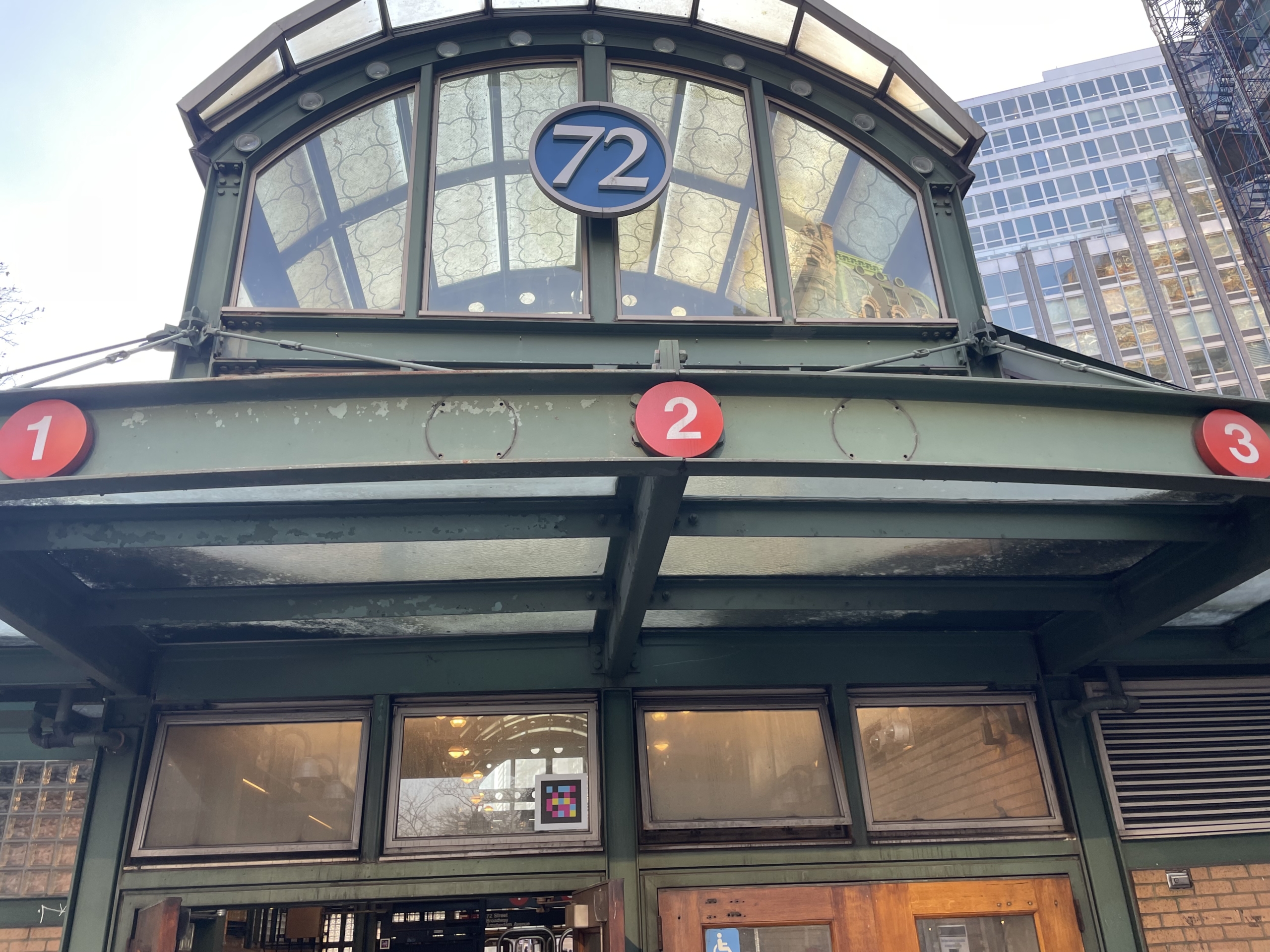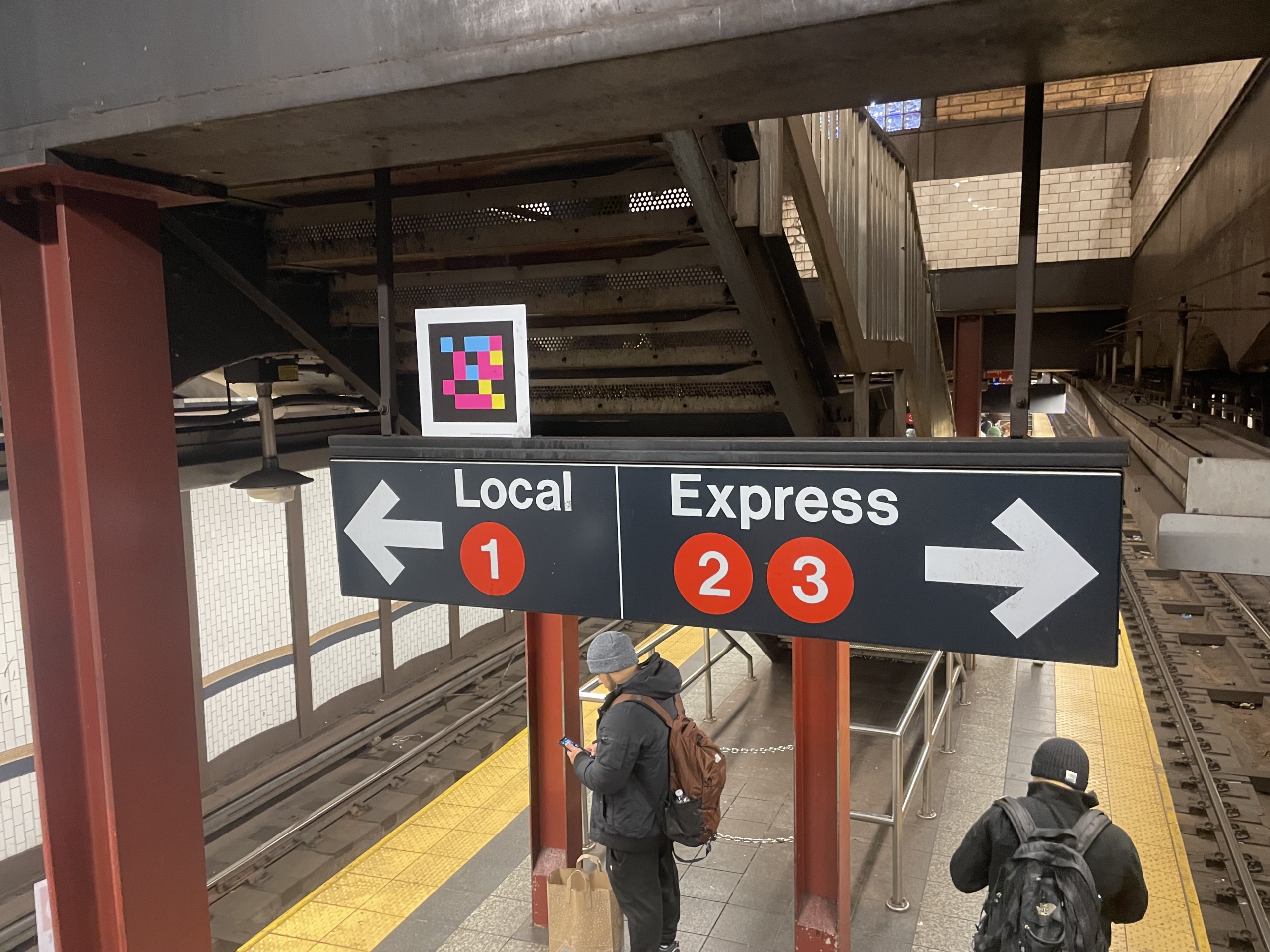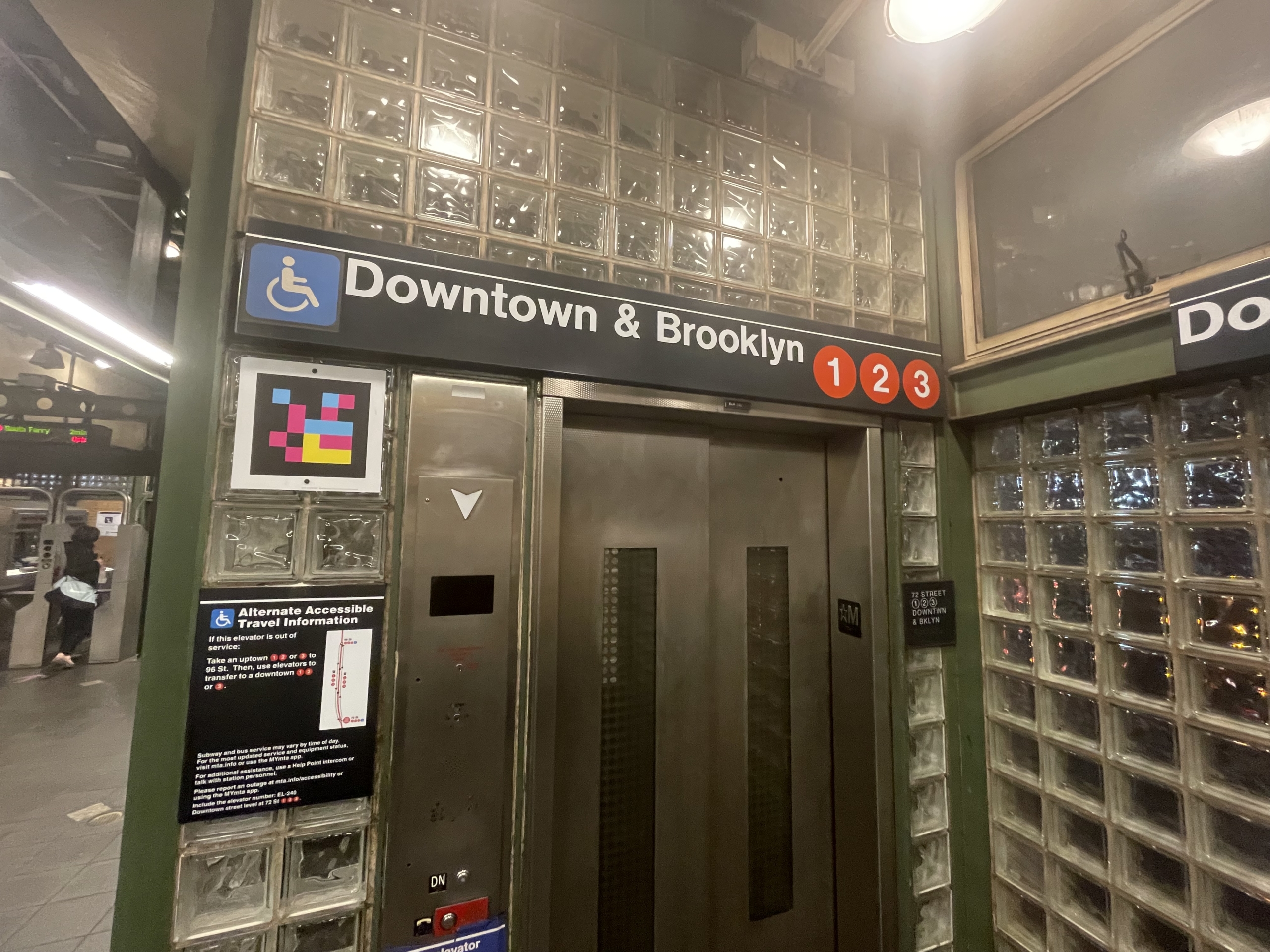
By Scott Etkin
Getting around in a crowded subway station can be challenging for anyone, much less people with low vision or little proficiency in English. That’s what NaviLens, the colorful tiles you may have noticed at the West 72nd Street and West 66th Street subway stations along Broadway, aim to solve.
While these decals could be mistaken for a bit of street art – perhaps reminiscent of Invader’s mosaics – they are actually a QR code that can be identified even by people who are nearly blind. NaviLens is available in 34 different languages, so it is also effective for riders who have low proficiency in English.

The system works by using the free NaviLens app. When the app detects a decal in the vicinity — they can be scanned up to 15 meters (49 feet) away and in all light conditions – the user’s smartphone reads the sign out loud. This enables people with low vision or English proficiency to decipher the Uptown/Downtown signs, countdown clocks, and other signage.
NaviLens was piloted at the Jay St-MetroTech station and along the M23 crosstown bus route on 23rd Street. In 2022, State Senator Brad Hoylman-Sigal, whose district includes the Upper West Side up to 100th Street, secured $600,000 in state funding for the UWS project. This paid for NaviLens in 11 stations and decals on all 24 stops on the M66 crosstown bus route on 66th Street.
In March 2023, U.S. Senators Charles E. Schumer and Kirsten Gillibrand announced that the MTA would receive $2 million in federal funding to further expand the NaviLens program.
“Every person, regardless of ability, should be able to navigate New York’s public transit system with dignity and independence,” Sen. Holyman-Sigal wrote in a statement to West Side Rag. “I am thankful to our federal partners for committing $2 million to bring this proven accessibility tool to people around the city.”
 The NaviLens rollout is part of the MTA’s overarching effort to make the subway system more accessible, for example by installing more elevators in stations and bright blue signs on platforms indicating where people with accessibility issues can board the train and find the nearest elevator.
The NaviLens rollout is part of the MTA’s overarching effort to make the subway system more accessible, for example by installing more elevators in stations and bright blue signs on platforms indicating where people with accessibility issues can board the train and find the nearest elevator.
Nine more stations will be outfitted with NaviLens by spring 2024, according to an MTA spokesperson. West 72nd Street is the northernmost station to receive NaviLens – the remaining stations are primarily stops on the 1 subway line from 72nd Street south to Houston Street.
NaviLens is based in Spain and was founded in 2012. In addition to being installed in transit systems across Europe, the decals can be found in other high-traffic public places, like museums, and on food packaging. Coca-Cola UK was the first beverage brand to pilot NaviLens technology.
For a video demonstration on how NaviLens works, click HERE.
You can subscribe to WSR’s free email newsletter here.









Thanks for looking into this! Interesting initiative.
I assumed it was some kind of viral marketing campaign to ignore. Great to know there are pilots to help the visually impaired like this.
Now if only we could have rapid pilots of things like different uses of street curbs. It’s good to experiment, folks!
This seems like a really good idea, assuming there aren’t privacy issues.
An excellent idea and should be a big help to many. But one problem with any system that requires scanning is that many older folks like myself have a tremor and even a minor tremor can make it impossible to get a reading from a phone or a credit or ID card.
As a general note, if when scanning it prompts you with a yes or no question,, those qr codes will capture your location through the app. Every time going forward you scan their QR codes will utilize location services through that app.
You should check location services in the app and make sure it is turned off, if you do not want to be tracked.
If you can use the app anonymously that’s great feature.